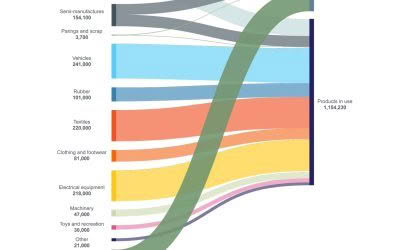The Ministry for the Environment commissioned Eunomia to produce a report about recycling rates that would assist them to determine how to calculate national recycling rates for Aotearoa New Zealand. Six metrics were put forward for the Ministry’s refinement and future use, including sets that are comparable to existing Australian, OECD, and EU metrics.
Typically national waste metrics include recycling rates presented as percentages of waste recovered compared to total waste generated, and per capita metrics for total waste generated presented as kilograms of municipal waste per person per annum. Although these calculations appear to be straightforward there are many variables including waste streams, activity sources, and destination types that could be included or excluded from the definition of municipal waste and therefore the calculation of the recycling rate. It is also important to consider what information is available and what may need to be estimated.
The report begins with a review of metrics from jurisdictions within Australia, European Union, United Kingdom, United States, as well as for the OECD and PacWaste Plus programme to analyse existing approaches and determine useful methods or lessons that could be adopted or adapted for New Zealand. The international review found that the data obtained appears to be incomplete or inconsistent, relying on significant data manipulation and estimates. Although all jurisdictions reported on “municipal solid waste”, the definition and scope varies between them. The report also reflected that this metric overlooks non-municipal waste streams that generate a significant amount of waste (e.g. construction and demolition and industrial waste) that could have a greater potential for diversion and/or reduction.
Next, the report reviewed the availability and quality of datasets from government, research, industry, and product stewardship sources that could be called upon to generate national recycling rate metrics. The analysis found that data should be improved overtime for accurate recycling rate metric calculations, and that there is a lack of on-going data for material recovery.
The report brings together learnings from the international metrics review and the national dataset review to explore metrics that could be used in New Zealand. This involved generating a dataset of the best available data to use alongside a recycling rate model to calculate metrics. The six rates that were generated for the report differed by what material streams and/or facilities were included, in order to produce metrics that were comparable to existing Australian, OECD, and EU metrics.


